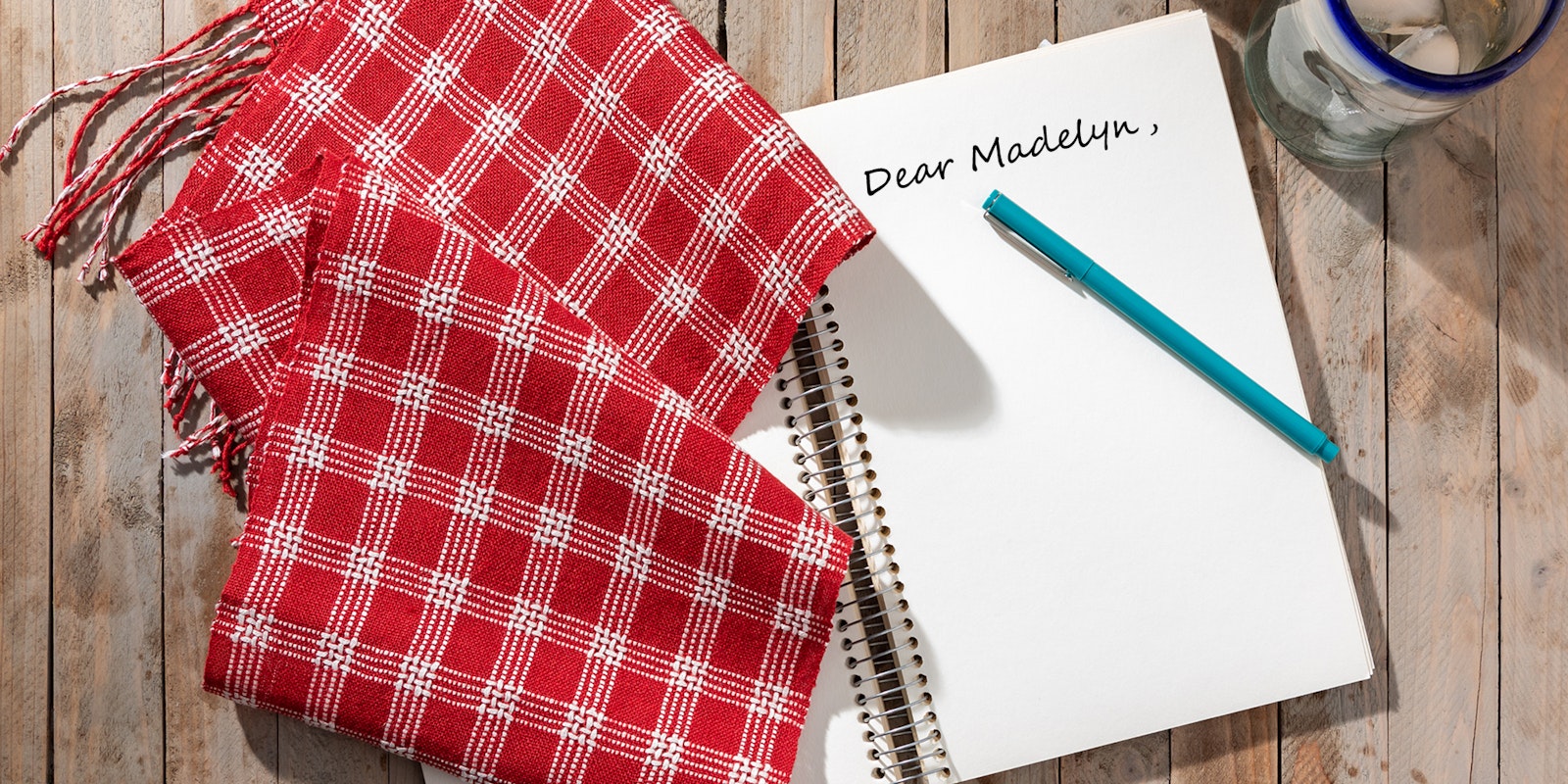Hi Madelyn!
I watched your warping video last night and got some useful tips I'm eager to try, even though I've been weaving for 30 years. Great video.
What method do you use for warping your drawlooms? I use a method I learned in Denmark, but it's very cumbersome, and I usually end up dealing with quite a few problems during the process. I'd appreciate any tips you could give me. I have a 60" Oxaback with a 40-shaft pattern attachment.
—Camille
Thanks, Camille!
My answer to this question may not make Handwoven readers put a drawloom on their wish list, but here goes (the plusses of weaving on a drawloom make the warp worth doing!).
I have used two different methods. For both, sley the reed (usually I do this off loom as in the video), then transfer the cross to the threading side of the reed (drawloom setts are usually fine and usually involve 3 or more ends in a dent). Then, sitting behind the shafts, thread the heddles. If I'm going to use Method One below, I hang lease sticks behind the shafts and make a new lease that I'll use to thread the pattern heddles, in which groups of threads are placed. So if 5 ends go in a pattern heddle, I make a cross of 5 threads alternating with 5 threads. Then:
Method One
Sit behind your 40 pattern shafts and reach for each 5-thread group and thread it in the appropriate pattern heddle. You first have to release enough of the warp for the threads to extend beyond the last pattern shaft leaving the lease sticks in place. (I secure the warp to the front beam securely with a choke tie after doing this; this would be a new choke tie with the warp in its new position; the threading choke tie would have been in place during threading the front shafts. NEVER let the warp threads move freely without being choked during the whole process.) This is the unpleasant part of this method. Then I also usually suspend a bar at the back of the pattern shafts to which I can temporarily tie the groups I've threaded so that they don't twist around each other and the heddles.
Before threading the front shafts, I hang all the pattern heddles I'm going to need for the project on two heavy bars or rods just beyond the ground shafts (suspend the rods from the castle), half of the heddles from one selvedge to the center on one bar, the other half of the heddles from the other selvedge to the center on the other bar. Then, I thread both the ground shafts and the pattern heddles at the same time. Then I beam the warp (I tie an extension to the back apron rod so I can bring it all the way up to where I can tie the ends of the warp to it and crank and beam right away) and tie onto the front apron rod so the warp is under moderate tension, just as though I were going to begin to weave.
Now, you can slide the pattern heddles, one at a time, off of the rods and take them to the pattern shaft they'll be on. You'll stand at the side of the warp to do this. Start with the rod closest to the back and slide the center pattern heddle off the end of the rod and then slide it onto the pattern shaft where it will go. (You'll have detached the cords from the pattern shafts.) Working from the center out, you'll move all the heddles off of that rod onto their respective pattern shafts. Then start with the second rod from the center heddle to the other selvedge in the same way, standing on the other side of the warp.
This sounds sort of awful but it eliminates the very awkward dangling of threads out of the pattern heddles as you thread them all (and also the need to pull enough warp forward for threading and the reaching from shaft 40 to the front shafts). I do sort of love this method. Whenever I want to change the threading of just the pattern shafts, I leave the warp tied on under tension, take all the pattern heddles off of the upper shaft bars, and move them to a new shaft, working from the center out.
You can only use Method Two if your pattern heddles are weighted with lingoes, not if they have bars. If they are weighted with bars, only Method One will work.
—Madelyn

